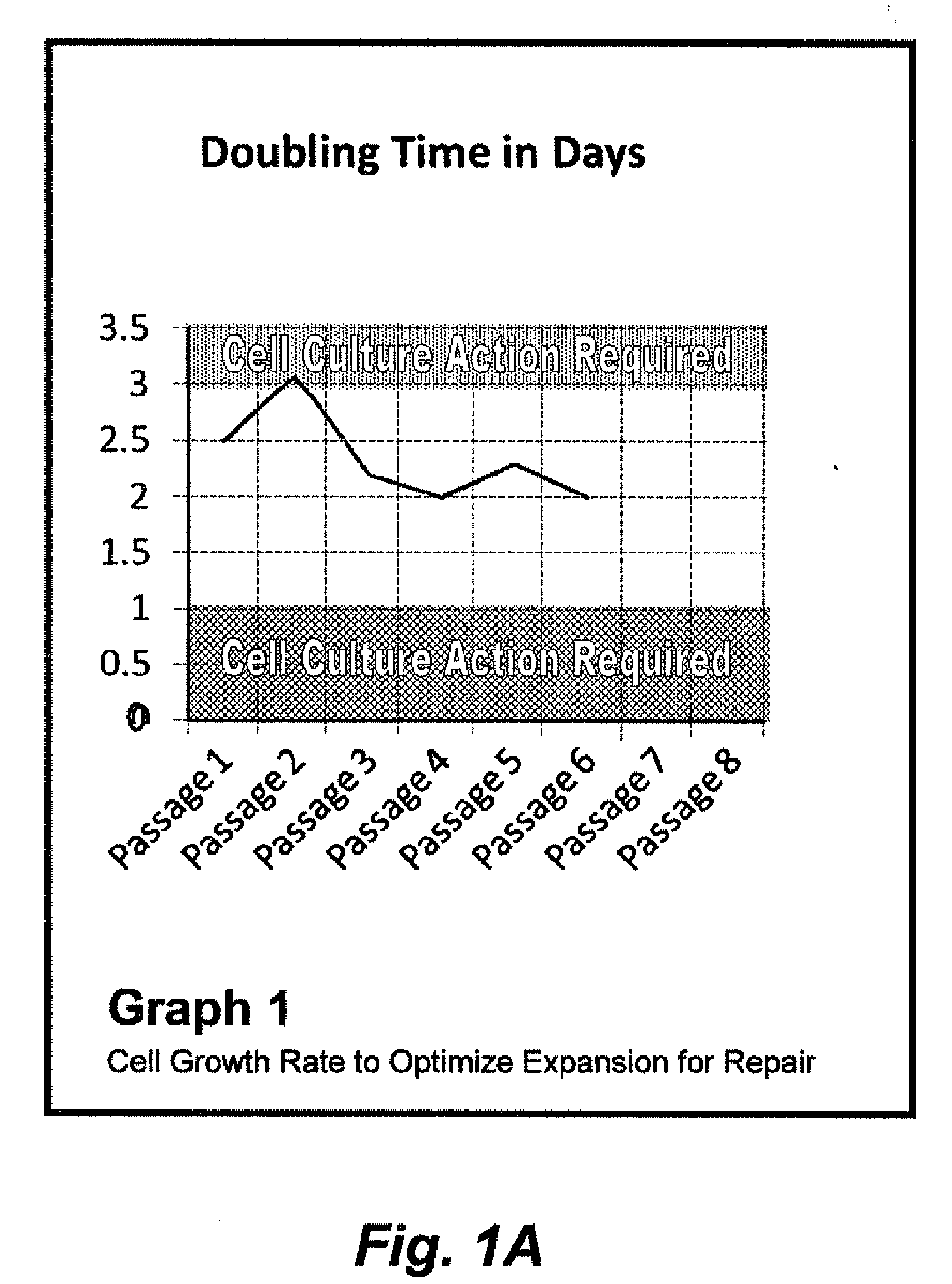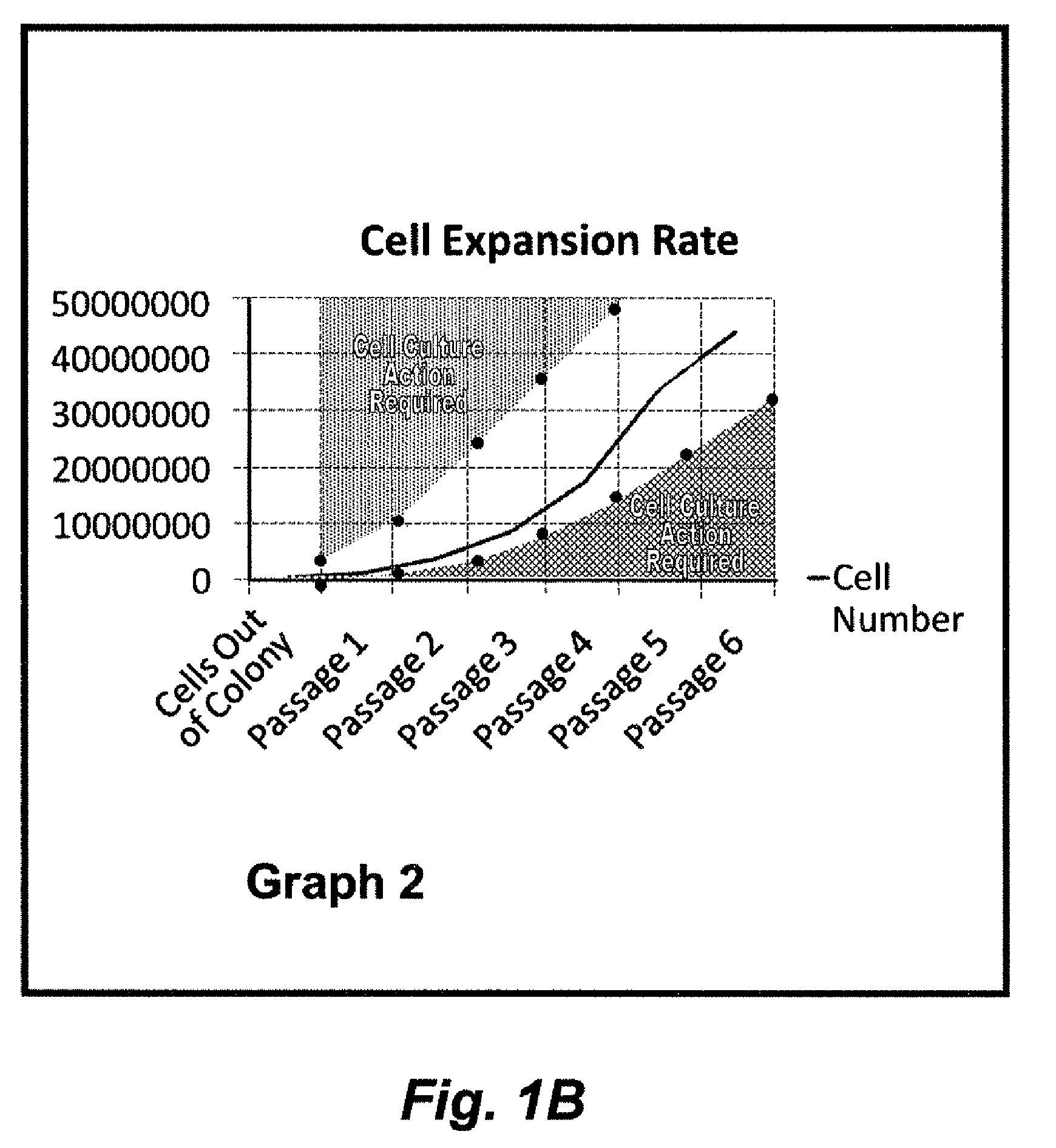Methods and compositions for optimized expansion and implantation of mesenchymal stem cells
a mesenchymal stem cell and composition technology, applied in the field of mesenchymal stem cell optimization, can solve the problems of increased potential for cancerous progenitors, non-food and drug administration (fda), cross-contamination of infectious vectors, etc., and achieve the effect of optimal growth characteristics
- Summary
- Abstract
- Description
- Claims
- Application Information
AI Technical Summary
Benefits of technology
Problems solved by technology
Method used
Image
Examples
example 1
Patients' MSC Growth in Relation to Growth Channel
[0086]Nucleated cells were harvested from a patient's posterior iliac crest and separated from the RBCs using centrifugation (serum is a gradient).
[0087]Approximately 10 ml of bone marrow was harvested from the target patient and transferred to a cell culture lab in a 15 ml centrifuge tube. The marrow sample was then spun down at 100 g for 2-3 minutes. The RBC pellet was checked to ensure that the bulk of the RBCs were in the lower half of the sample and that a clear zone exists between the RBC pellet and top fraction of material. Note that if the top fraction is not 40-50% of the total volume, the spin step will need to be repeated. The top fraction was then removed and placed in a 15 ml centrifuge tube and spun at 1000 g for 10 minutes. Note that the nucleated cell pellet may appear red and perhaps loosely packed, dependent on the number of RBCs present. The serum supernatant is removed and added back to the RBC pellet. The nucleat...
example 2
Patient MSC Growth is Dependent on Patient's Health
[0091]MSCs were harvested from individuals having osteoarthritis and grown as described in Example 1. Growth rates for each patient's cells were determined as well as overall yield.
[0092]Harvested MSCs were grown on varying amounts of platelet lysate (5-10%) and plotted over the course of 11 days (500% concentration of patient native platelet concentration and lysis using freezing). The data is shown graphically in FIG. 2, where MSC yield and rate of growth varied significantly. This Example illustrates the variability of growth found between patients and the need to optimize MSC growth rates.
example 3
5% Platelet Lysate is Ineffective at Optimizing MSC Growth
[0093]MSC harvested from patients having osteoarthritis (slow growth MSC), as described in Example 1, were expanded using either 5% platelet lysate, 10% platelet lysate or 20% platelet lysate. As shown in FIGS. 3A-E, many cell lines grown with 5% platelet lysate were unable to show maximum expansion as compared to cells grown on 10-20% platelet lysate. Note that for most cell lines grown on 20% platelet lysate conditions showed only minimal expansion benefit as compared to 10% platelet lysate. However, it must be stressed that our experimental data shows that patients with OA have extremely variable expansion rates, with a few patients able to hit growth channel targets at 5%, most at 10%, and some requiring 20% supplementation. In addition, patients with other conditions such as avascular necrosis of the femoral head, fail expansion in even 10% lysate and require multiple modifications only determined via experimental protoc...
PUM
| Property | Measurement | Unit |
|---|---|---|
| volume | aaaaa | aaaaa |
| concentrations | aaaaa | aaaaa |
| concentration | aaaaa | aaaaa |
Abstract
Description
Claims
Application Information
 Login to View More
Login to View More - R&D
- Intellectual Property
- Life Sciences
- Materials
- Tech Scout
- Unparalleled Data Quality
- Higher Quality Content
- 60% Fewer Hallucinations
Browse by: Latest US Patents, China's latest patents, Technical Efficacy Thesaurus, Application Domain, Technology Topic, Popular Technical Reports.
© 2025 PatSnap. All rights reserved.Legal|Privacy policy|Modern Slavery Act Transparency Statement|Sitemap|About US| Contact US: help@patsnap.com



